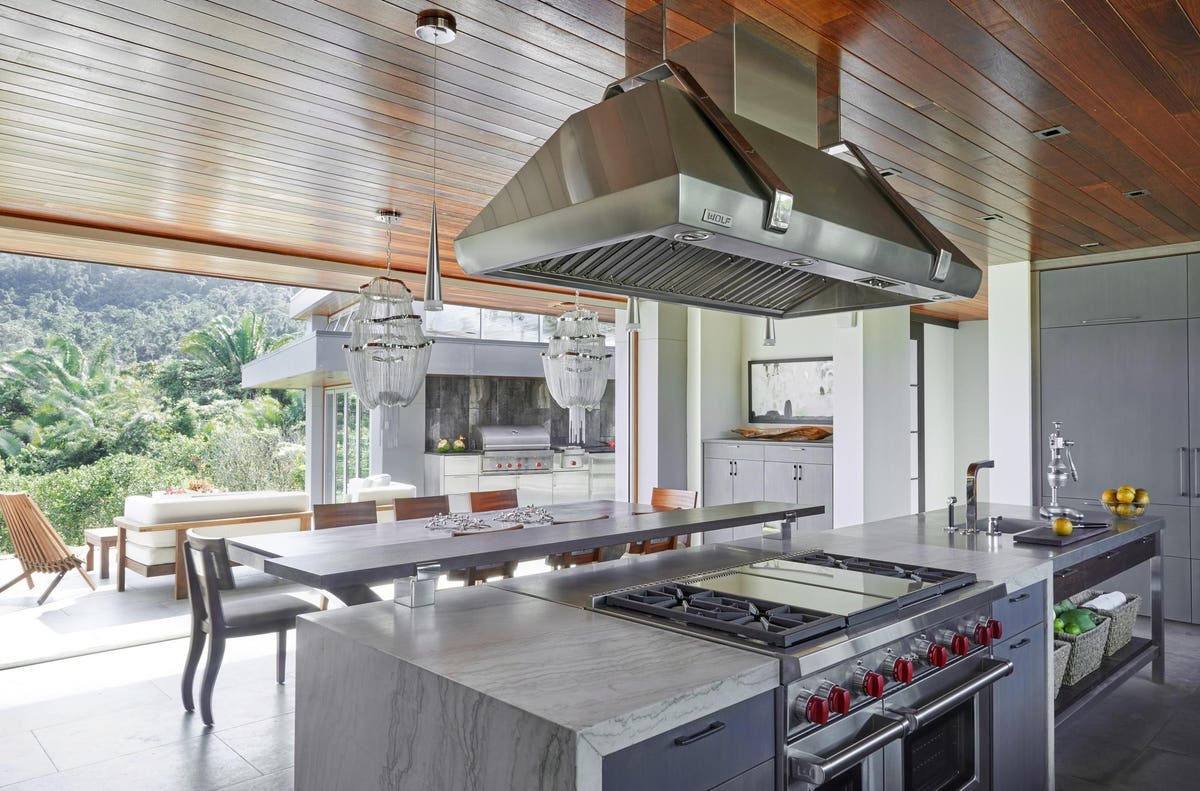A kitchen remodel is one of the largest, most expensive and complex, and potentially impactful project you can undertake in your home. Done well, it can positively affect resale value when you go to sell your property, but also your health, safety, comfort and functionality in the meantime. That’s why it’s worth paying heed to what the pros say is trending. And why I always pay heed when the National Kitchen & Bath Association, a trade organization comprising 50,000 members, including designers, dealers, remodelers, installers and manufacturers, releases its annual studies. (In the interest of disclosure, I’ve been an NKBA member for close to two decades, but it’s just one of several leading associations I source for research.)
The 2024 Kitchen Trends Research Report is hot off the presses this week, and you probably won’t be surprised to learn that wellness design plays a strong role in the findings, gathered from online interviews with specifiers and manufacturers. Here are eight of the wellness-related emerging trends cited in the responses that have a tie-in to sustainability. I’m including insights from three NKBA member designers who had a chance to review the report and expound in written responses to trends described in its wellness and sustainability-related points.
1. Outdoor Connections
Linking indoor and outdoor spaces is a definite priority of Raleigh-Durham, North Carolina area designer Vicky Serany, with an emphasis on creating flow between workspaces and gathering zones for maximum efficiency, she says. “We use expansive sliding doors that open to outdoor living spaces and many times incorporate phantom screens for the most flexibility.”
As many pros have discovered in the last decade – and particularly since Covid made outdoor get-togethers a safer experience than indoor gatherings – having outdoor rooms increases a home’s usable space and appeal.
2. Biophilia
Biophilia, literally love of living elements, shows up strongly in the report, the pros agree. “Natural woods are finishing their way back into kitchen design, and we are adding touches of character woods, including oak, walnut and cherry, into almost every kitchen we design,” declares designer Sarah Robertson in Westchester County, just north of New York City. She chooses finishes that allow the natural beauty of the woods to become the focal point, she notes.
Jeanne Chung in Pasadena, California sees the same trend. “Our clientele no longer want a sterile kitchen – they want a kitchen with life that also feels lived in. White oak and walnut have been at the top of the list in terms of trending wood species, and we’re starting to use alder,” she adds. Chung is also bringing wood onto ceiling beams and water-resistant flooring. “Natural wood can quickly transform a space that is void of personality to one of warmth and hospitality,” she shares.
“Connecting with nature has become a priority for homeowners,” Serany adds. “Whether it’s large doors and windows opening to outdoor living spaces or living walls of moss and plants, bringing nature into our designs is a current trend.”
3. Lighting Enhancements
Natural light plays a role in both enhancing indoor-outdoor living and biophilia. “We are using many large windows, especially if there is a beautiful view,” the North Carolina designer comments, observing that this client preference for natural light often means less upper cabinetry. Rather than sacrifice storage to accommodate it, she and her colleagues add pantries and deep drawers elsewhere in the kitchen.
“The kitchen is the best room in the house to show multiple layers of lighting,” Chung declares. In addition to task lighting for work surfaces and accent lighting for mood-setting, she turns to tunable white lighting that allows for color temperature setting. This is one of the trends that energy-efficient LEDs have made possible.
4. Sustainability Ascendant
One of the emphases of sustainable design has long been local sourcing, a trend that Serany optimizes, she says, with related benefits for wellness. “Using local materials and craftsmen has always been a priority in our designs.” This approach provides more assurance that her sources are using natural materials that eliminate the risk of toxins and chemicals she doesn’t want off-gassing into her clients’ kitchen and living areas, she notes.
5. Induction Cooking
“It is only a matter of time before induction will exceed 50% of cooking surfaces,” Chung predicts, seeing this transition in the next 10 to 15 years as a normal effect of new construction and appliance replacement. “As consumer education picks up speed, it will lose the stigma associated with the old coil electric cooktops of the ‘70s. The technology and performance is much different,” she exclaims.
In her Los Angeles area market, new construction is required to be all-electric, she says. The same is true for a project she’s managing in Hawaii, and observes that this trend is having global effects. “Last year at the German Haus Fair, gas was visibly absent, with only one or two units on display throughout,” she recalls. (At the annual Kitchen & Bath Industry Show, owned by NKBA, there are more, newer and more sophisticated induction offerings each year.)
6. Composting Emerges
An increasing number of states — nine, as of June 2023 — are mandating that locals compost, rather than add food scraps to landfills, thus reducing greenhouse gases. This is a trend Robertson has embraced, she says, but she’s not focused on a trickle of new composting appliances slowly entering the market. “We compost directly into a bin, and food scraps are picked up weekly. I think we need to be cautious in purchasing and running yet another electrical appliance for the sake of composting,” she comments. Will recent offerings, including 2023’s KBIS Kickstarter grand prize winner, sway her? Perhaps not, but for many residents compelled to compost without convenient pickup, they could be appealing.
7. Low Maintenance Minimalism
“Minimalist designs require less cleaning, which allows for a healthier approach to cleaning products and reduced exposure to harsh chemical cleaners,” Robertson observes. “Anything with a ‘less is more’ approach is more sustainable by design because fewer resources are required for its construction,’ she qualifies.
Chung adds, “Natural light, a clutter free environment, a functional layout, and creating a balanced and calming atmosphere is tied to wellness, whereas the emphasis on the use of sustainable materials, energy efficiency, and the mindful approach to consumption minimizes the ecological impact.”
8. Universal Design
We tend to associate aging in place with Baby Boomers hitting their 60s, 70s and 80s, but the survey pointed to Generation X as the leading client group in the NKBA report. They too are looking at creating kitchens they’ll be able to function in as they get into their later years, simultaneously enhancing the sustainability of their projects.
This busy, active cohort is also looking at spaces that can remain usable if they or a household member is injured in a sports or auto mishap. “We strive to make universal design elements a standard practice whenever possible,” Serany comments, citing wider clearances, user-friendly cabinet and door hardware, minimal steps into a home and extra blocking for elevators that can enhance a kitchen/great room area.
“The upper end of the Gen X demographic is surprisingly very aging in place focused,” notes Chung. “More and more, consumers in their early 50s are asking that their homes be remodeled with universal design in mind,” she shares.
Last Words
Technology and innovation play a strong role in wellness design and kitchen trends too. Next week’s NKBA report coverage will look at that aspect of those themes.
Read the full article here





